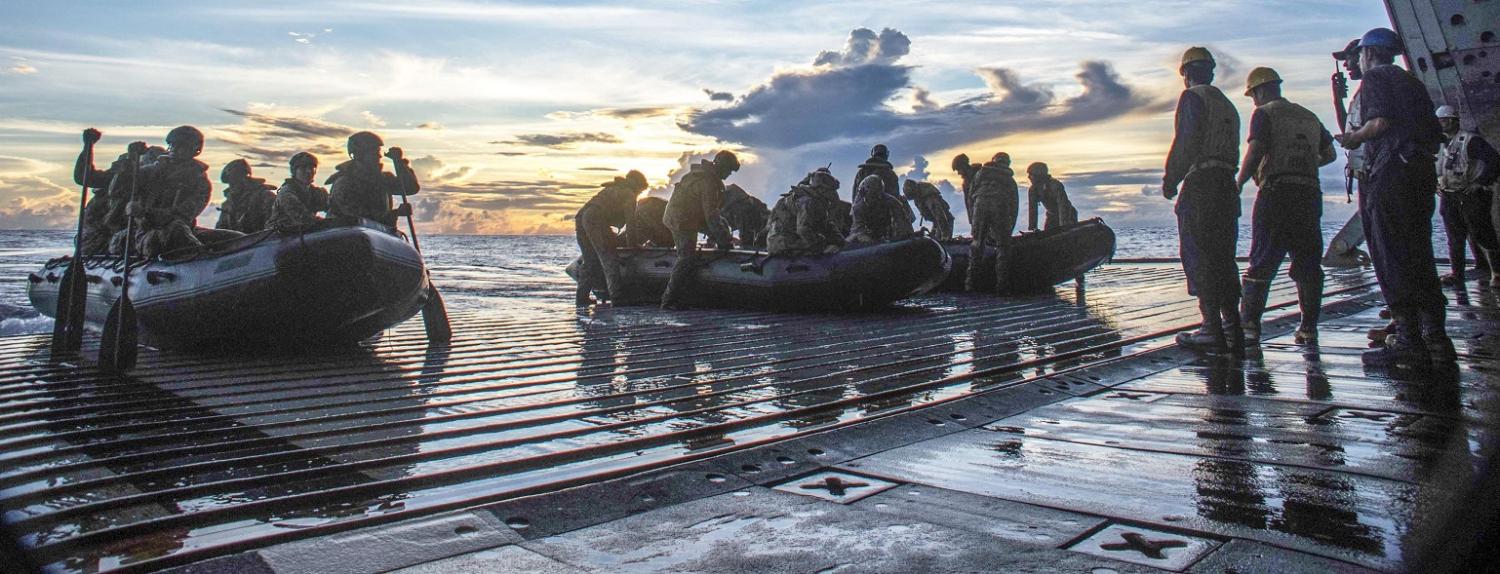American Secretary of State nominee Rex Tillerson has provoked controversy with statements about possible actions by the United States in the South China Sea. In testimony at a confirmation hearing he suggested the US might deny China access to its artificial islands in the South China Sea. This would be problematic - legally, politically and strategically.
Would blocking China’s access to its 'artificial islands' in the South China Sea be lawful? The arbitral tribunal in the case between China and the Philippines in the South China Sea found that China’s reclamation works on some particular features had violated the rights of the Philippines, were incompatible with the obligations of states during dispute resolution, and had inflicted irreparable harm on the marine environment. However, these critical findings provide no justification for another state to take enforcement action.
It’s not clear from Tillerson’s testimony whether he was referring to all of China’s occupied features where reclamation works have taken place, or just those that were previously 'low tide elevations', and thus not entitled to a territorial sea. Even a report by CNA, a research and analysis organisation in Washington has conceded China’s claims to sovereignty over islands in the South China Sea that are not low-tide elevations may be as good as those by other countries. Any attempt by the US to deny Chinese access to islands that could be legitimately Chinese would be unlawful.
An American legal scholar supported Tillerson's suggestion, saying the US should not respect China's rights to navigate freely throughout the South China Sea because Beijing does not respect reciprocal rights under international law. This argument is faulty on many grounds. It would be disproportionate and a heavy-handed approach to freedoms of navigation in the South China Sea that ignores the reality that most of this sea comprises the exclusive economic zones (EEZs) of the littoral countries, including China. Non-littoral countries should exercise their rights of navigation and overflight in these waters with due regard to the rights and duties of the adjacent littoral state.
The US is in no position to preach on the implementation of the 1982 UN Convention on the Law of the Sea (UNCLOS). It's not a party to the convention and appears not to respect key elements of it, namely the EEZ regime and the regime in its Part IX for the management of semi-enclosed seas, such as the South China Sea.
UNCLOS makes clear that the EEZ should be reserved for peaceful purposes. While China's placement of weapons on its reclaimed islands and the US freedom of navigation operations (FONOPS) arguably don’t offend this principle, more assertive actions by the United States such as trying to blockade islands, undoubtedly would.
Tillerson’s suggestion does not help the US politically in the region. It wins few friends. No Southeast Asian country would support such extreme unilateral action by Washington. It ignores the sensitivities of regional countries and smacks of an anachronistic and neo-imperialistic attempt to re-assert Western domination in the region.
There's no strategic merit in Tillerson's suggestion because it would be impossible to deny China's access to particular features in the South China Sea without risking open conflict. China has a marked home-ground advantage in the region, and could readily muster more forces, at least in quantity, than the US could. The US could not enforce a blockade without being prepared to conduct strategic strikes against Chinese bases and that would be tantamount to war.
Tillerson has not been alone in making suggestions to the incoming Trump Administration on how to deal with the situation in the South China Sea. A common argument is the Obama Administration was weak in responding to China's assertive behaviour and the Trump Administration should take a much stronger stand.
A recent report by the Center for Strategic and Budgetary Assessments (CSBA) in Washington recommended a major escalation of action by the US and its allies in the South China Sea. It proposed more thorough-going military engagement including a program to demonstrate allied military superiority, deter further Chinese adventurism, and reinforce the confidence of regional allies and partners in the commitment of their Western partners to resisting Chinese coercion.
Similarly, two academics from the US Naval War College have called for the Trump Administration to execute the US 'pivot' or 'rebalance' to the Pacific more swiftly and steadfastly than the Obama Administration did. In a particularly worrying proposal, they suggest tAmerican statesmen should recover their 'past derring-do' and be prepared to recognise that 'close quarters encounters, cat and mouse games between submarines and opposing fleets, and even deliberate collisions' could become routine elements of the rivalry between the US and China. This is all a throw-back to the confrontations between the naval forces of the US and the Soviet Union at the height of the Cold War.
China appears not to have made any strong response to the testimony by Tillerson, or other calls for the US to take stronger action in the South China Sea. This moderate response supports Beijing's arguments that it's the US, rather than China that is militarising the sea. This approach will help win friends from countries in the region that are put off by the 'hawkish' threats from the US. Rather than choosing to align militarily with the US, as Washington might hope, Southeast Asian countries are hedging against increasing tension, and possible conflict between the US and China, rather than taking sides more directly with either of these major powers.
The US could play a positive role in the South China Sea by supporting UNCLOS Part IX, promoting cooperation, and providing expertise to help manage the sea, its environment and resources. In contrast, recent suggestions from Washington for stronger military action will stir up tensions and frustrate the necessary cooperation. Further militarisation of the South China Sea will help nobody.

